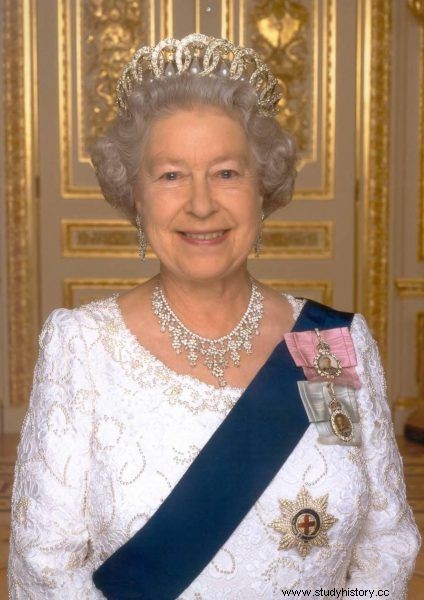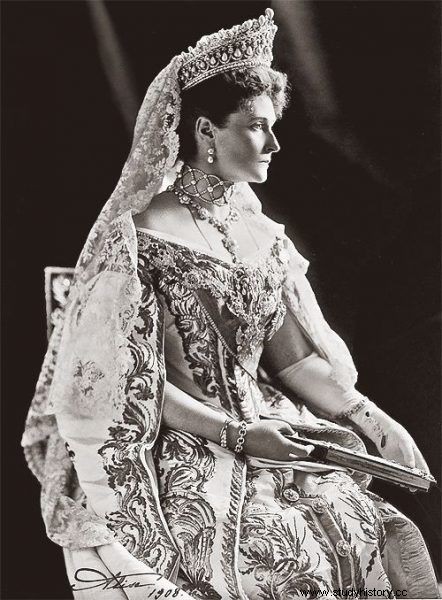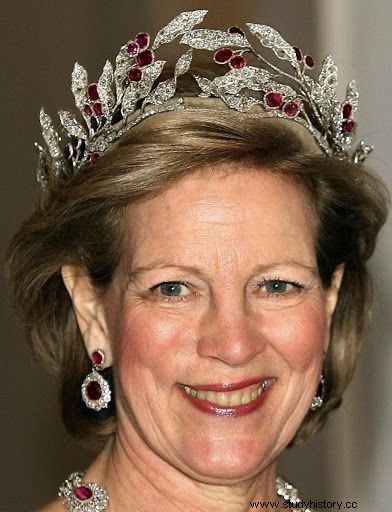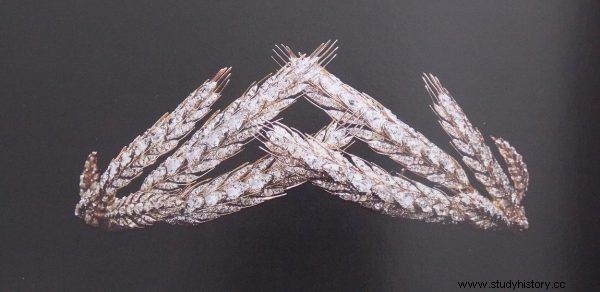After the October Revolution, the Bolsheviks robbed the Romanovs of their fabulous jewels. Some works of jewelery art were miraculously saved. Trinkets with tsarist lineage adorn the wrists, ears and heads of European monarchs.
The men of the Romanov dynasty generously presented their wives with wonderful valuables. The owner of one of the greatest jewelry collections was Nicholas II's aunt - Grand Duchess Maria Pavlovna, wife of his uncle Włodzimierz. Its collection includes, among others, a brooch with a 107-carat emerald (the second largest in the world) and a diadem with a 137-carat sapphire. Maria Pavlovna bought countless necklaces, brooches, tiaras and earrings, and strands of wonderful pearls from Cartier and Fabergé. The fame about the grand duchess' valuables reached other ruling families, and foreign princesses made pilgrimages to Maria Pavlovna's palace in St. Petersburg to see her jewelry stored in glass cases.
It was close, and after the Bolshevik Coup, the Grand Duchess would lose her trinkets….
From St. Petersburg to London
At the outbreak of the October Revolution, the Grand Duchess and her sons were in the Caucasus, in the popular spa town of Kisłowodsk. According to the decision of the new authorities, Maria Pavlovna, as one of the Romanovs, was placed under house arrest and deprived of her apparition. At one point, the Grand Duchess and her relatives even began to starve.
When it became clear that the Bolsheviks were winning the civil war, Maria Pavlovna decided to leave Russia. Of course, money was needed to live abroad. The woman wanted to obtain them from the sale of jewelry, which was in her St. Petersburg palace, in a tightly hidden safe.
The Grand Duchess' friend Bertie Stopford, a courier at the British embassy and an art dealer, offered the assistance in extracting the jewelry. Having diplomatic status, he was able to move freely around war-torn Russia. The Englishman went to Petesburg. There, under the cover of night, in a woman's disguise, he went to the palace of Maria Pavlovna, opened the safe, took the valuables, and the next day took them out of Russia in the diplomatic mail. Upon arriving in London, he deposited the treasure in a bank locker in the name of the Grand Duchess.

Włodzimierz's tiara of Elizabeth II
In February 1920, Maria Pavlovna left Russia and settled in the French town of Contrexville, where she died soon. She bequeathed her jewels to four children. Her diadem, famous all over Europe, was inherited by her daughter Elena, wife of the Greek prince Nicholas.
However, the monarchy in Greece was overthrown and the princely couple had to flee abroad. The spouses settled in France, but did not have a stable source of income. So the only way to get money was to sell Elena's diamonds. Most of them - including the "Włodzimierzowski" diadem - were purchased in 1921 by the English Queen Maria, grandmother of the reigning Elizabeth II. Elizabeth II herself often appears in this diadem at state ceremonies and poses for official photos. So it can be concluded that the "Włodzimierzowski" diadem is one of her favorites.
Bolshevik vultures
When in August 1917, Nicholas II and his family went to Siberian exile, they treated their precious jewels as a kind of insurance policy for hard times. Protecting the valuables from the Bolsheviks, the tsarina sewed them into the corsets and underwear of her daughters.
When the Romanovs went down to the basement of the Ipatiev house on the night of July 17-18, 1918, the girls were wearing family jewels. After communicating the death sentence to its victims, the firing squad opened fire. Nicholas, Alexandra Feodorovna and the heir to the throne Alexa died immediately, but the four tsarist daughters were bayoneted because the valuables on their bodies formed a kind of shield partially protecting against bullets. After searching the sisters, the torturers found jewelry weighing 8 kg. Tsarina Alexander was wearing a few valuable things; there were also hiding places with valuables in the rooms of the Romanovs.

Aleksandra Fedorovna tiara lost in 1927
The leader of the execution, Yakov Yurovsky, made a list of found items, which he brought to Moscow and handed over to the Kremlin commander. Part of the jewelry supplied from the Urals was sold at foreign auctions. The largest one was held in 1927 in London. It was then that the hammer went under the hammer, among others the magnificent tiara of Alexandra Feodorovna, the work of Kurt Hahn, in which the tsarina went to the opening of the first State Duma in 1906 and posed for one of her most famous portrait photos. After 1927, the fate of this item remains unknown.
Many valuables were stolen by the torturers themselves- Jurowski in his memoirs confirmed that the soldiers from the firing squad hid the valuables of the victims in their pockets. Lost, among others. Santa's II gift for his wife - a brilliant brooch in the shape of her favorite tea rose. A two-meter string of pearls consisting of beautiful specimens the size of grapes - an engagement gift for Alexandra Feodorovna from the future father-in-law of Alexander III - has become much shorter.
Generous dowries
Some of the tsarist jewels found their way into the treasuries of European monarchs through marriages with the great Roman duchesses, who brought them as dowry after marrying foreign princes. After the death of the rulers, these valuables remained the property of their new families.
Thus, the Dutch dynasty inherited the jewels from their Russian queen, Anna Pavlovna, who married Prince William, future King William II. A Russian woman settled in their country in 1816 and ruled in the years 1840–1849. In May 2013, during the enthronement of King William Alexander, the ladies of this dynasty wore sapphires from her collection :the new monarch Maxima - a tiara with precious stones from the dowry of a Russian woman, and the outgoing Queen Beatrix - a brooch.

Rubies of the Greek Queen Anne Maria
Maxima's wedding tiara also has Russian origins, although his road to Amsterdam was more complicated. Originally, this item belonged to Grand Duchess Catherine, the younger sister of Alexander I. In 1816 she became the wife of King William of Württemberg, in 1818 she gave birth to his daughter Sophia and died at the beginning of the following year. Sophie inherited this jewel and brought it as a dowry after marrying the heir to the Dutch throne, Prince William in 1839.
In the 1860s, the ruler of the Romanov family was welcomed in Orthodox Greece, where King George I reigned. professes the same faith as them, and children born of this union will be brought up in Orthodoxy. Olga Konstantinovna left a good memory for her charity and valuables. Her ruby tiara is worn by Queen Anna Maria living in exile.

Wheat motif tiara, property of the Hessen-Kassel family
In 1844, a beautiful diadem with wheat ears motifs found its way to the German Hessen-Kassel dynasty after the marriage of the local heir to the throne, William, with Alexandra, daughter of Nicholas I. Unfortunately, the young wife died of tuberculosis less than a year after the wedding. Her dowry remained with her husband's family. During World War II, members of this dynasty buried the treasure in tight chests on their property in Kronberg. But in 1945, when American soldiers were stationed on their property, some of the jewels, including Alexandra's tiara, disappeared. The head of the family sent an official letter to the American command, and soon the wheat-themed tiara was returned to its rightful owners. Since then, it has been worn by all the brides of the Hessen-Kassel family.
